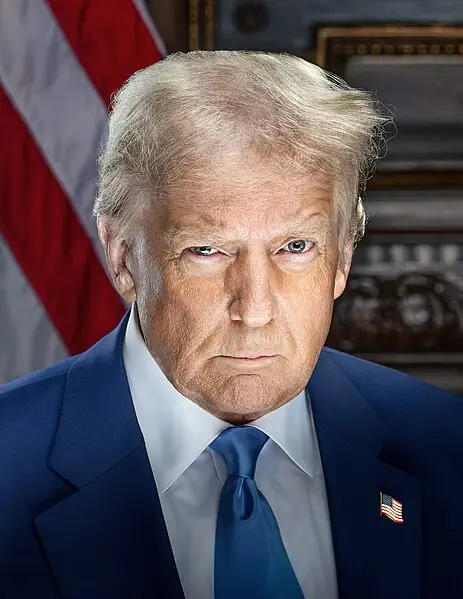Trump slaps 27% reciprocal tariffs on India, lower than on Asian competitors China, Vietnam, Thailand & Indonesia

Former U.S. President Donald Trump has announced 27% reciprocal tariffs on Indian goods, citing trade imbalances and the need to protect American industries. While India faces significant tariffs, the rate is notably lower compared to other Asian nations like China, Vietnam, Thailand, and Indonesia, which are being hit with even higher tariff rates. This move signals Trump’s ongoing stance on “America First” trade policies while acknowledging India’s strategic importance.
Understanding Trump’s Tariff Decision
Trump has long advocated for reciprocal trade policies, arguing that U.S. exports face high duties in several countries while foreign products enter America with minimal restrictions. India, in particular, has been a recurring issue in U.S. trade discussions due to its tariffs on American goods in key sectors like automobiles, agriculture, and technology.
The imposition of 27% tariffs on Indian exports is an attempt to create a more balanced trade relationship without completely disrupting bilateral trade. Unlike the heavier tariffs on China and Southeast Asia, India’s relatively lower rate suggests a middle-ground approach rather than outright economic hostility.
Impact on India’s Economy and Export Sectors
The new tariffs will have a mixed impact on India’s economy. While they could challenge exporters, they might also push Indian industries toward greater self-reliance and diversification.
Industries Most Affected
Certain Indian sectors will bear the brunt of these tariffs, including:
- Textiles & Apparel: India exports a large volume of garments and fabric to the U.S. The increased costs may reduce demand for Indian-made clothing.
- Pharmaceuticals: While India is a major supplier of generic drugs to the U.S., additional tariffs could lead to higher prices, affecting market competitiveness.
- Automobile Parts: India’s growing auto component industry supplies major U.S. automakers. The tariff hike may lead to increased production costs.
- IT & Technology Services: Though software exports remain largely unaffected, hardware components such as electronic goods could see higher taxation.
Potential Benefits to Indian Industries
While the short-term impact may appear negative, some sectors could benefit:
✅ Boost to Domestic Manufacturing: With reduced reliance on exports, Indian companies may focus on local markets and government-backed “Make in India” initiatives. ✅ Diversification of Export Markets: Indian exporters could shift focus to European, Middle Eastern, and African markets to offset U.S. losses. ✅ Strengthened Trade Ties with Other Nations: With the U.S. market becoming expensive, India might strengthen agreements with Australia, the UK, and Japan to ensure trade stability.
How India Compares to Other Asian Nations
Trump’s tariffs on India may seem high, but they are far lower than those imposed on other Asian countries, particularly China. The breakdown of tariffs on different nations is as follows:
- China: Facing tariffs exceeding 50% on key exports, largely due to its ongoing trade war with the U.S.
- Vietnam & Thailand: Seen as competitors to American manufacturers, facing tariffs above 35-40%.
- Indonesia: Accused of benefiting unfairly from trade surpluses with the U.S., facing tariffs close to 30%.
- India: At 27%, India’s tariff rate suggests the U.S. still values it as a strategic partner, though trade imbalances remain a concern.
Political and Diplomatic Ramifications
The imposition of tariffs is not just an economic measure but also a political signal. With U.S. elections approaching, Trump is looking to rally support from American manufacturers by taking a strong stance on international trade.
Implications for U.S.-India Relations
Despite the tariff hike, the U.S. and India share a strong diplomatic relationship. Both nations have collaborated on defense, technology, and energy. However, these tariffs might lead to:
- Increased trade negotiations: India could demand tariff reductions or offer concessions on U.S. exports to avoid trade tensions.
- Potential retaliatory measures: India might impose counter-tariffs on U.S. goods such as agricultural products, Harley-Davidson motorcycles, and American whiskey.
- Closer ties with alternative trade partners: If tensions escalate, India may strengthen economic relationships with Russia, the EU, and the Middle East.
Reactions from Indian Business Leaders
Indian business associations and exporters have voiced concerns over the potential decline in U.S. market access. The Confederation of Indian Industry (CII) has urged the government to seek diplomatic solutions. Meanwhile, startups and mid-sized companies fear losing their competitive edge in the global market.
What’s Next?
Trump’s tariff move sets the stage for potential renegotiations in U.S.-India trade policies. Key developments to watch include:
- Diplomatic discussions between New Delhi and Washington in the coming months.
- India’s response—whether it will impose counter-tariffs or seek alternative trade routes.
- Impact on Indian exporters and their ability to compete globally.
Conclusion
The 27% reciprocal tariff on India marks another chapter in Trump’s aggressive trade policies. While it poses challenges for Indian exporters, it also presents an opportunity for economic restructuring, diversification, and domestic growth. The future of U.S.-India trade will depend on negotiations and geopolitical considerations, making the next few months crucial for both economies.






